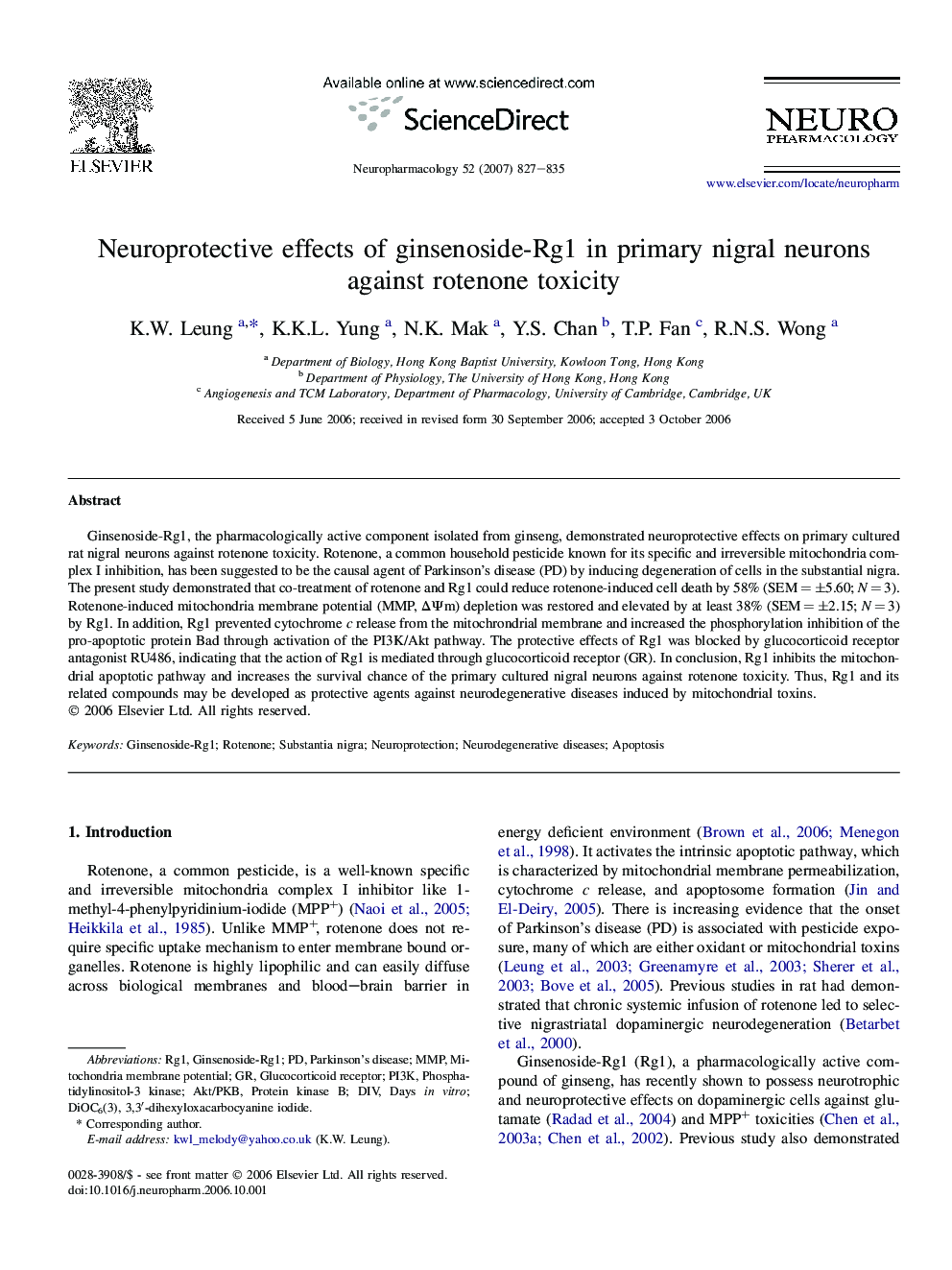| Article ID | Journal | Published Year | Pages | File Type |
|---|---|---|---|---|
| 2495316 | Neuropharmacology | 2007 | 9 Pages |
Ginsenoside-Rg1, the pharmacologically active component isolated from ginseng, demonstrated neuroprotective effects on primary cultured rat nigral neurons against rotenone toxicity. Rotenone, a common household pesticide known for its specific and irreversible mitochondria complex I inhibition, has been suggested to be the causal agent of Parkinson's disease (PD) by inducing degeneration of cells in the substantial nigra. The present study demonstrated that co-treatment of rotenone and Rg1 could reduce rotenone-induced cell death by 58% (SEM = ±5.60; N = 3). Rotenone-induced mitochondria membrane potential (MMP, ΔΨm) depletion was restored and elevated by at least 38% (SEM = ±2.15; N = 3) by Rg1. In addition, Rg1 prevented cytochrome c release from the mitochrondrial membrane and increased the phosphorylation inhibition of the pro-apoptotic protein Bad through activation of the PI3K/Akt pathway. The protective effects of Rg1 was blocked by glucocorticoid receptor antagonist RU486, indicating that the action of Rg1 is mediated through glucocorticoid receptor (GR). In conclusion, Rg1 inhibits the mitochondrial apoptotic pathway and increases the survival chance of the primary cultured nigral neurons against rotenone toxicity. Thus, Rg1 and its related compounds may be developed as protective agents against neurodegenerative diseases induced by mitochondrial toxins.
